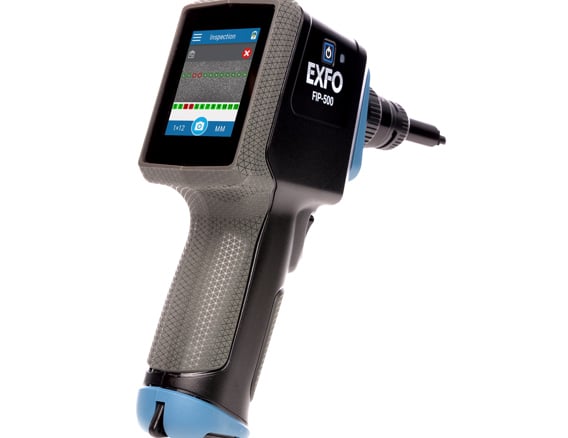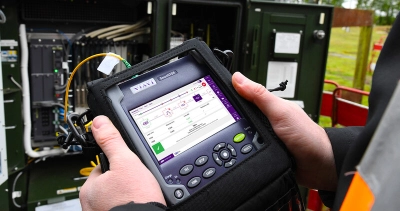How robotic vision empowers real-time data analysis
Recognizing Exactly How an Optical Measurement System Enhances Accuracy in Industrial Applications
Optical measurement systems play a vital role in enhancing precision across different industrial applications. By leveraging sophisticated technologies such as laser interferometry and 3D imaging sensing units, these systems supply high-resolution, non-contact measurements. This capacity reduces the danger of damaging sensitive components while making sure accuracy. Nevertheless, the impact of these systems extends past mere measurements. Exploring their benefits, applications, and future patterns reveals a complex landscape of innovation and obstacles that merits closer exam.
The Essentials of Optical Measurement Systems
Optical measurement systems act as crucial tools in various industrial applications, giving exact data collection and analysis. These systems make use of light as a main means of measurement, leveraging optical concepts to examine dimensions, placements, and surface features of items. They incorporate elements such as lasers, electronic cameras, and sensors, which work with each other to catch high-resolution photos and information.
The innovation allows non-contact dimensions, reducing the danger of damaging sensitive parts. Optical measurement systems are versatile, discovering utility in high quality control, setting up verification, and dimensional evaluation across various markets. They are particularly efficient in atmospheres where typical measurement methods might drop short, such as gauging intricate geometries or observing fast motions.
As sectors remain to advance, the assimilation of optical measurement systems will certainly stay crucial for making certain precision and efficiency, eventually improving item quality and functional efficiency in various manufacturing procedures.
Trick Technologies Behind Optical Measurement
Secret modern technologies such as laser interferometry techniques and 3D imaging sensing units play a crucial duty in the effectiveness of optical measurement systems (optical measurement system). These modern technologies allow precise measurements and thorough evaluation in numerous commercial applications. Understanding their performances is vital for taking advantage of the full capacity of optical measurement systems
Laser Interferometry Techniques
Numerous laser interferometry methods have reinvented the area of optical measurement, using unprecedented precision and precision in different industrial applications. These strategies use the interference of meaningful light waves to gauge distance, displacement, and surface area abnormalities with nanometer-level precision. Usual methods include Michelson interferometry, which splits a beam and analyzes stage shifts, and Fabry-Pérot interferometry, known for its high resolution in determining tiny changes. Additionally, laser Doppler interferometry employs regularity shifts to evaluate speed, making it very useful in dynamic measurements. The adaptability of these techniques permits their integration into varied production procedures, enhancing quality assurance and ensuring adherence to rigid resistances. Therefore, laser interferometry remains to play a critical function beforehand commercial measurement requirements.
3D Imaging Sensors
Developments in measurement innovation have actually resulted in the advancement of 3D imaging sensors, which play a considerable role in optical measurement systems. These sensors capture three-dimensional data with various strategies such as triangulation, time-of-flight, and organized light. By precisely rebuilding the form and measurements of items, 3D imaging sensors improve the accuracy of measurements in industrial applications. They give real-time responses, assisting in top quality control and making certain that elements satisfy rigid requirements. Additionally, their ability to operate in tough environments, such as differing lights problems, makes them vital in manufacturing processes. As sectors progressively take on automation, the integration of 3D imaging sensing units into optical measurement systems is expected to drive more enhancements in performance and precision.
Benefits of Optical Measurement in Sector
Traditional measurement methods have actually long been the standard in industrial settings, optical measurement systems offer significant benefits that enhance accuracy and performance. These systems make use of light to catch information, leading to high-resolution dimensions that are usually unattainable with conventional methods. The non-contact nature of optical measurements reduces the threat of damaging delicate elements during the assessment procedure. In addition, the rate of optical dimensions enables fast data procurement, helping with timely decision-making in fast-paced industrial settings.
Optical systems are versatile, efficient in measuring numerous products and shapes without the demand for comprehensive recalibration. This versatility adds to improved workflow and productivity. Furthermore, the automation potential of optical measurement systems minimizes human error, making certain regular quality assurance. In general, the integration of optical measurement modern technology represents a progressive shift in the direction of boosted accuracy and reliability in commercial operations, inevitably bring about enhanced product top quality and helpful site operational performance.
Applications of Optical Measurement Systems

Optical measurement systems play an essential role in boosting production process optimization by providing exact information for decision-making. These systems guarantee quality assurance guarantee via real-time tracking and evaluation of manufacturing metrics. As industries significantly adopt these modern technologies, their influence on efficiency and item reliability ends up being evident.
Manufacturing Refine Optimization
Enhancing manufacturing procedure effectiveness is significantly dependent on the assimilation of optical measurement systems. These systems provide real-time data on different specifications, enabling suppliers to analyze procedures with a high level of precision. By enabling specific dimensions of measurements, surface characteristics, and material homes, optical measurement systems promote the identification of ineffectiveness and traffic jams in production lines. The prompt responses from these systems empowers engineers to make educated decisions, causing maximized machining, setting up, and finishing processes. The capability to monitor problems continuously allows for adaptive adjustments, decreasing downtime and waste. As industries go for higher productivity and reduced operational costs, optical measurement systems emerge as important devices for boosting manufacturing process optimization.

Quality Assurance Assurance
The combination of optical measurement systems substantially effects quality control guarantee in industrial setups. These systems provide exact and non-destructive dimensions, allowing manufacturers to find problems and inconsistencies early in the production procedure. By using advanced imaging strategies, such as laser triangulation and interferometry, optical measurement systems ensure that components meet rigid specifications. This facilitates real-time surveillance, reducing waste and minimizing the threat of faulty products getting to the market. In addition, the data gathered can be assessed to refine production procedures better, leading to continuous enhancement. Eventually, the fostering of optical measurement systems boosts integrity and uniformity in quality assurance, promoting greater confidence among stakeholders and consumers alike in the final items supplied.
Situation Researches: Effective Implementations
Various markets have efficiently incorporated optical measurement systems to boost their operational effectiveness and item top quality. As an example, in the automotive industry, a prominent producer embraced a laser triangulation system to keep track of the positioning of automobile elements. This execution considerably lowered setting up mistakes, causing enhanced security and decreased costs.
In the aerospace sector, a leading aircraft maker used optical metrology for accuracy measurements of generator blades, attaining a reduction in making resistances and better efficiency requirements.
Similarly, a customer electronics firm applied optical measurement modern technology during the production of smart device displays, leading to enhanced quality assurance and a reduction in faulty products.
These instance research studies illustrate how optical measurement systems not only enhance precision but additionally add to overall functional effectiveness, demonstrating their worth throughout various fields. By dealing with details needs, these systems have actually shown to be vital tools in contemporary commercial applications.
Challenges and Limitations of Optical Measurement
While optical measurement systems use significant benefits in numerous industrial applications, they are not without their challenges and constraints. One major concern is level of sensitivity to ecological conditions, such as temperature level fluctuations, humidity, and dirt, which can detrimentally affect measurement accuracy. In addition, optical systems often need exact placement and calibration, making them vulnerable to human error throughout arrangement and operation. One more constraint is the possibility for interference from ambient light, which can distort measurements and require intricate filtering system strategies. Specific products and surfaces may present problems, as reflective or transparent features can lead to irregular analyses. The expense of premium optical elements and systems can likewise be a barrier for some industries, restricting widespread fostering. Specialized training is usually needed for workers to efficiently operate and maintain these systems, including to the general complexity and operational obstacles.
Future Patterns in Optical Measurement Innovation
As improvements in technology proceed to form industrial processes, the future of optical measurement systems is positioned for considerable evolution. Arising fads suggest a change in the direction of enhanced integration of artificial knowledge and equipment knowing, allowing systems to evaluate information in real-time, recognize patterns, and enhance decision-making processes. Furthermore, the advancement of miniaturized sensors and progressed optics is expected to lead to even more portable and flexible measurement services, making them accessible for a larger series of applications.
Additionally, the unification of 3D imaging and high-resolution abilities will permit unprecedented precision in dimensions, which is crucial for sectors such as Extra resources aerospace and auto. The promote automation and Sector 4.0 will also drive the need for optical measurement systems that can conveniently interface with Web Site other technologies. As these trends unfold, optical measurement systems will likely come to be integral to accomplishing greater effectiveness and precision throughout various commercial markets.

Frequently Asked Questions
Just How Do Optical Measurement Systems Compare to Standard Measurement Techniques?
Optical measurement systems provide higher precision and rate compared to conventional methods - optical measurement system. They lessen human mistake, boost information collection effectiveness, and offer real-time outcomes, making them progressively preferred in various industrial applications for precise measurements
What Industries Advantage the A Lot Of From Optical Measurement Systems?
Optical measurement systems substantially benefit industries such as aerospace, automobile, and electronics. Their capability to offer high-precision measurements enhances quality control, reduces manufacturing errors, and improves total effectiveness, making them vital in affordable production environments.
Can Optical Measurement Systems Be Customized for Details Applications?
Optical measurement systems can certainly be tailored for details applications. By changing criteria such as wavelength, resolution, and calibration techniques, sectors can tailor these systems to satisfy distinct precision and accuracy requirements successfully.
What Is the Upkeep Need for Optical Measurement Systems?
The maintenance requirements for optical measurement systems usually consist of regular calibration, cleaning of optical components, and software program updates. Sticking to these methods assurances precision, reliability, and long life of the measurement equipment in different applications.
Exactly How Do Ecological Variables Impact Optical Measurement Precision?
Ecological elements, such as temperature fluctuations, moisture, and dust, significantly effect optical measurement accuracy. These components can distort light courses and disrupt sensing unit readings, inevitably compromising the integrity and accuracy of dimensions in commercial settings.